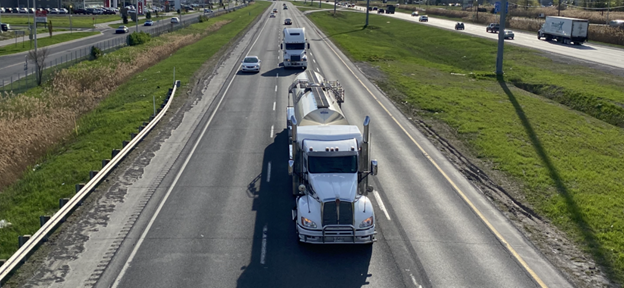How can an employer be sure that a candidate for a truck driving job would not be a risk to company assets, customer cargo, other road users, and themselves?
Comprehensive road tests offer one of the best tools to evaluate an applicant’s technical skills and driving behaviors. But the process involves more than ensuring the truck driver completes the journey.
Charles Morier, a heavy vehicle instructor at Centre de formation en transport routier de Saint-Jérôme (CFTR), and road behavior expert Jean-Pascal Assailly, offer tips that evaluators can use to gain deeper insights about the skills and attitudes that truck drivers would bring to a job.
Create a climate of trust
There is a value in taking some time over a coffee to get to know a job candidate before a road test begins. This helps break down psychological barriers and establish a sense of trust that will help better gauge the driver’s character, skills, and attitude.
Monitor the attention to detail
Once the candidate completes a circle check, several techniques can be measured in the fleet yard. Having a driver couple a tractor to the trailer offers the chance to monitor their attention to details, such as ensuring that the fifth wheel’s jaws have properly closed around the king pin.
Observe what they see
Once traveling down the highway, begin a conversation about family, friends and social activities. But at any moment, interject with questions about the number, location, and even color of vehicles to their left, right, or in front of the truck. And how often are they looking at their mirrors?
Drivers should be seen following the Smith System of Driving’s five key rules – looking far ahead, expanding their visual field, keeping their eyes moving, ensuring they are seen and predictable, and ensuring they don’t leave themselves boxed in without an escape.
Ask drivers to describe what they can’t do
What a driver avoids is just as important as what they do. As they move through an urban environment, can they identify signs that prohibit trucks from entering specific streets? Do they know how to identify routes that cannot accommodate heavy vehicles?
Watch their demeanor
Calm drivers are safe drivers. Is a candidate abrupt in their maneuvers and braking? Do they seem aggravated when someone cuts them off or drives too slowly in front of them?
Back up observations
Several skills and approaches can be observed by asking a driver to back into a space or loading dock. Does the candidate get out and look (GOAL)? Back up smoothly and at a low speed? Do they demonstrate patience – especially if they have to repeat the maneuver?


